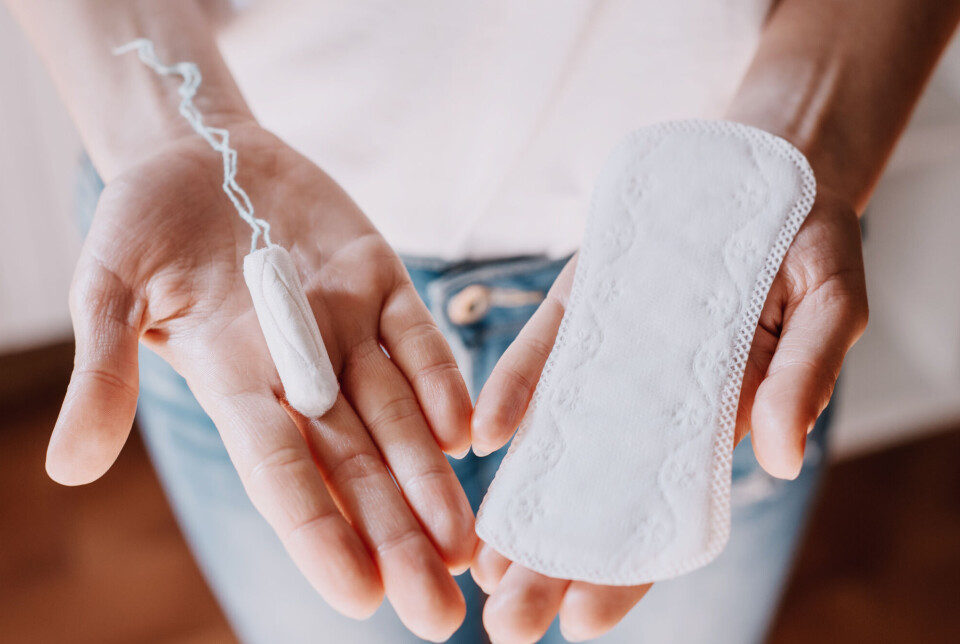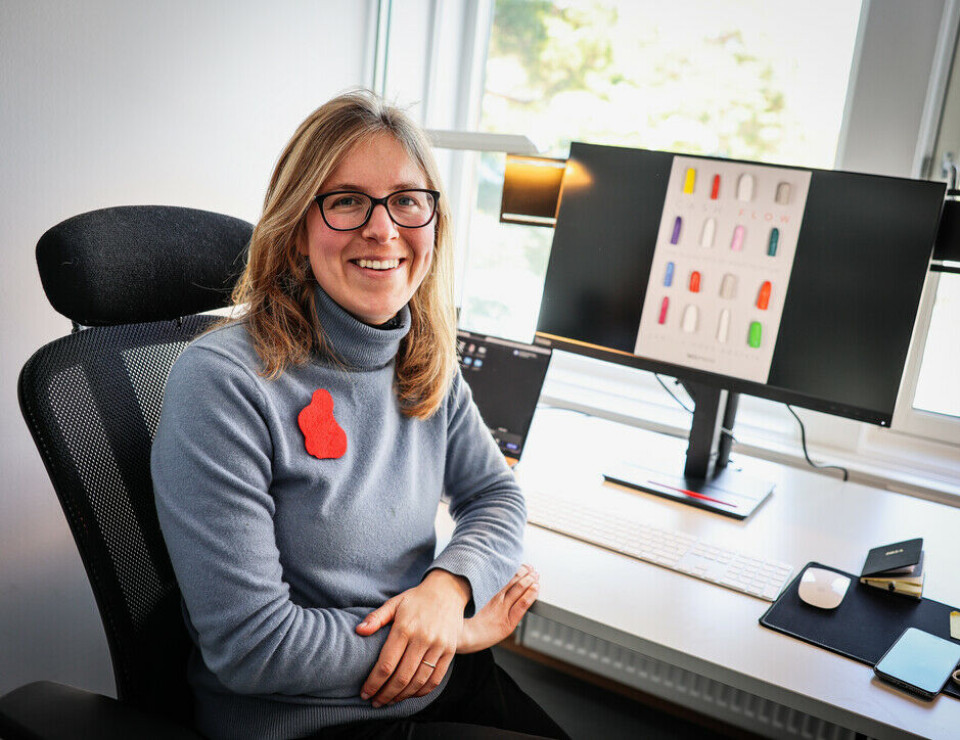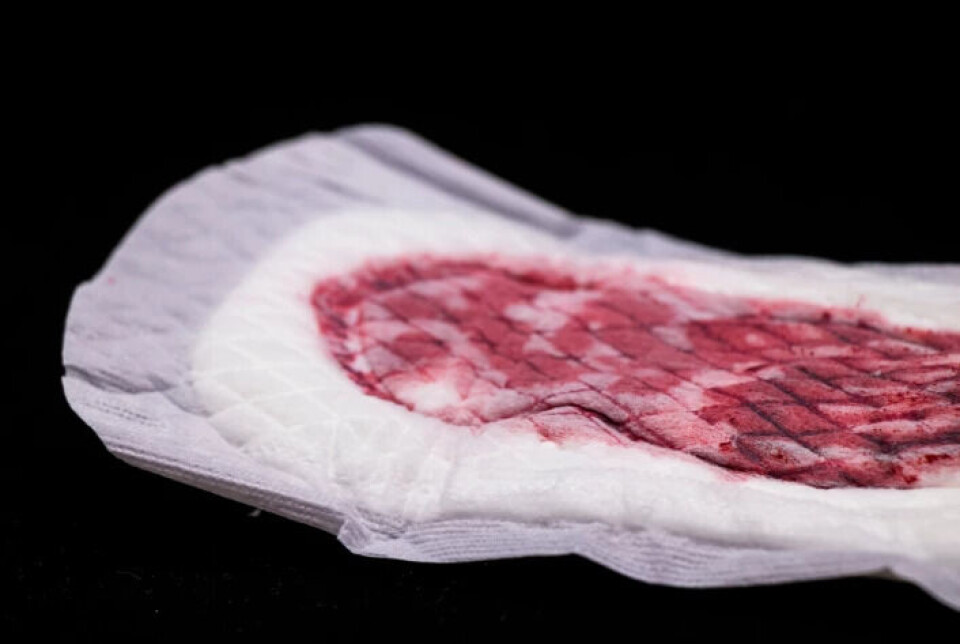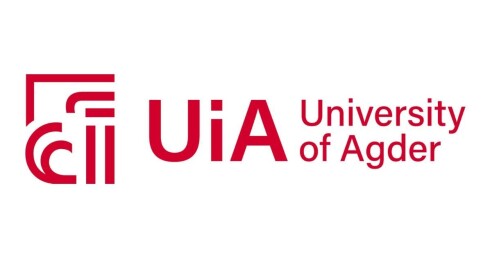THIS ARTICLE/PRESS RELEASE IS PAID FOR AND PRESENTED BY THE University of Agder - read more

From taboo to a billion-dollar industry: 100 years ago we didn't really talk about why women bleed
Menstruation has gone from being considered a disease to becoming part of the fight for women's health - and an industry worth billions.
“For a long time, menstruation was considered a disease. It was only in the 1940s that it became less shameful. But it was still radical to say that you could work and go to school when on your period,” Camilla Mørk Røstvik says.
She is an associate professor in the Department of Religion, Philosophy and History at the University of Agder (UiA).
Companies that manufacture pads and tampons
In a new book, Røstvik dives into 100 years of corporate history. She has gone through the archives of companies that manufacture pads and tampons.
She explored the history of Saba in Norway, Essity in Sweden, Tambrands in the former Soviet Union, Procter & Gamble in Britain and Europe, Kimberly-Clark in North America, and the newer companies Thinx from the USA and Clue from Denmark.
She looks at how managers of the large companies, who have mainly been men, have influenced how we view menstruation.

“If you use our products, you will feel good. This is often how they advertised them. They promote that you should be young, clean, attractive, and ideally white. You should also be active, preferably skiing or skating,” Røstvik says.
Blood did not fit the image
Before the war, many women in Norway used to knit their own sanitary pads in order to reuse them. Since blood is difficult to remove, it was hard work to wash them by hand.
In the 1920s, it finally became easier, and American companies instead introduced the idea of buying and throwing away pads. In Norway, Saba started manufacturing disposable pads after the war.
“It was their chance to make money off of something that was actually seen as a taboo in society. Companies attracted customers by showing how women should exercise, eat and look their best during their menstrual cycle. The blood did not fit the image,” the researcher says.
Saba became a symbol
Røstvik points out that since menstruation was such a taboo subject, selling feminine hygiene products was itself a kind of activism. This caused feminists in the 1970s to start questioning the products.

“It is the first time that Norwegian activists rebelled and asked questions about the products. What is actually in them? Why do they cost so much? Why embellish the truth about what it is like to menstruate?” Røstvik says.
Until the 1990s, Saba had an effective monopoly in Norway, which was later taken over by the Essity brand.
Saba gradually became a symbol for Norwegians that it was actually possible to talk about sanitary pads, blood, and menstruation.
Women are taking over
Today, feminine hygiene products are a billion-dollar industry. According to a report from Markets and Markets, the market is projected to reach 27.7 billion dollars by 2025.
In the past, tampon manufacturers were typically male dominated. Røstvik says that in recent years there has been a tendency for more women to start their own businesses in this field.
“The new entrepreneurial culture expresses the same criticism that the feminists raised. Here, women dominate with products such as the menstrual cup and period pants. They are fed up with the big companies that are not actively developing, and the uncertainty about what the sanitary products contain,” the researcher says.
Think they are going to die
Today, the market is overflowing with better and more products. A ton of apps help you keep track of your cycle. Countries like Kenya and Scotland provide sanitary pads and tampons to the population for free.
Even though we have come a long way, Røstvik sees that issues related to women's health are not understood well enough.
“These products have made it easier to be active without risking bleeding through your clothes. But challenges related to menstruation have never received much attention. What is normal pain during menstruation? And when should you suspect a diagnosis of endometriosis?” she asks.
Endometriosis is a disease that affects women, where tissue, similar to the tissue lining the womb, grows outside of the uterus. This causes severe pain during menstrual periods and can lead to fertility issues, according to Helsenorge.
Without sufficient knowledge, several studies show that having a period can become a traumatic experience.
“According to a Norwegian survey, the generation from 1890 to 1920 confirms that they thought they were going to die when they got their first period. And this is still happening. We still need better teaching and clear language about menstruation being blood,” Røstvik says.
References:
Camilla Mørk Røstvik. Cash Flow: The businesses of menstruation, UCL Press, 2022. ISBN: 9781787355385
Camilla Mørk Røstvik. “We Did Not Have Menstruation, We Had ‘Stomach Aches’”, Tidskrift for kjønnsforskning, 2018. DOI: 10.18261/issn.1891-1781-2018-04-02 Abstract.

This article/press release is paid for and presented by the University of Agder
This content is created by the University of Agder's communication staff, who use this platform to communicate science and share results from research with the public. The University of Agder is one of more than 80 owners of ScienceNorway.no. Read more here.
See more content from the University of Agder:
-
Research paved the way for better maths courses for multicultural student teachers
-
The law protects the students. What about the teachers?
-
This researcher has helped more economics students pass their maths exams
-
There are many cases of fathers and sons both reaching elite level in football. Why is that?
-
How we used plants to protect ourselves from evil
-
What is it like for nurses to promote health behind bars?




































